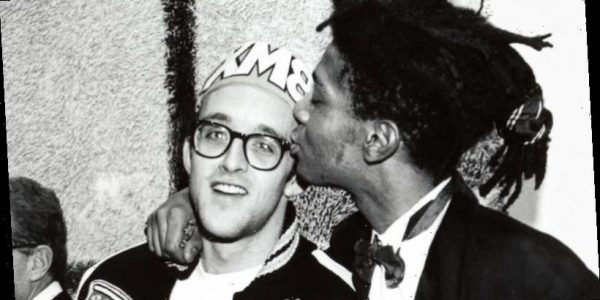
A West Hollywood man agreed Tuesday to plead guilty to federal charges that he sold bogus artworks that he claimed were created by artists such as Jean-Michel Basquiat, Keith Haring, Roy Lichtenstein, and Andy Warhol.
Philip Righter, 43, also admitted using fake paintings as collateral for loans on which he later defaulted, and using fraudulent pieces for phony write-offs on his income tax returns, according to the U.S. Attorney’s Office.
Righter will plead guilty — on a date to be determined — to federal charges of wire fraud, aggravated identity theft and tax fraud, according to his plea agreement filed in Los Angeles federal court.
In total, Righter attempted to bilk victims out of well over $6 million, and he caused losses of at least $758,265, according to the plea agreement. In addition, his fraudulent tax returns cost the United States more than $100,000, the document states.
Righter faces up to 25 years in federal prison in the case filed in Los Angeles, prosecutors said. He’s also currently facing charges in the Southern District of Florida for an alleged $1 million attempted art fraud on a Miami gallery. A hearing in that case is scheduled for Wednesday.
From 2016 until June 2018, Righter executed a scheme to defraud people, businesses and the government by using counterfeit and fraudulent art that he asserted was genuine and supported those false claims with bogus provenance documents he created, federal prosecutors allege.
Before August 2016, Righter generally conducted the fraudulent transactions in his own name. But after the FBI and the Los Angeles Police Department interviewed him about bogus Haring art he attempted to sell to a Miami gallery, Righter began using the names of other people to execute his scheme, according to court documents.
In order to make the fake artwork appear authentic, Righter allegedly ordered and used embossing stamps that appeared similar to the authentic stamps used by the estates of Basquiat and Haring on authentic art by those artists.
Righter admitted he used the stamps on provenance documents that he created and were later used to deceive his victims into believing the artwork was legitimate, according to the plea agreement.
For example, Righter fraudulently used without authorization the name and signature of Gerard Basquiat — the artist’s father and former administrator of the estate — on fraudulent provenance documents, court documents allege.
Righter also falsely used the identifications of the estates of Basquiat and Haring, falsely used the names of those two artists, and falsely used the name of a legitimate gallery where Basquiat art was previously sold, according to prosecutors.
In furtherance of the scheme, prosecutors say, Righter obtained and attempted to obtain numerous loans by using the fraudulent art and accompanying fraudulent provenance documents. For example, in October 2016, using another person’s name, Righter contacted a victim about a loan in which a purported original drawing by Basquiat would be used as collateral, according to court documents.
Prosecutors contend Righter created a fraudulent certificate of authentication letter that purportedly came from Basquiat’s estate. The victim wired a $24,000 loan, on which Righter later defaulted. After Righter’s default, the victim attempted to auction the piece, but the auction house determined the piece was fraudulent, and the victim lost $24,000, according to court papers.
Righter also allegedly sold or attempted to sell numerous pieces of fake modern art. In August 2017, using another person’s name, Righter listed a purported 1983 piece of art by Basquiat with the word “Samo” written on it with an art sale website and he provided fake provenance documents, according to the U.S. Attorney’s Office.
The website sold the piece for $50,000. In 2018, after the piece was determined to be fake, the website had to refund the purchase price to the buyer, prosecutors said.
Righter also admitted that he knowingly and willfully included a false W-2 and a false donation of fraudulent art to a charity on his 2015 federal income tax return, which resulted in him fraudulently receiving a refund of $54,858, according to his plea agreement. Righter then signed and filed a false 2015 amended tax return, which claimed a false casualty and theft loss of $2,575,000 related to artwork he claimed had been stolen.
In truth, the artwork was fraudulent and had no value. The bogus amended tax return resulted in false loss refunds for 2012, 2013 and 2014 totaling $52,485, according to court documents.
The FBI’s Art Crime Team, the LAPD and IRS Criminal Investigation investigated the case.

Let’s face it, most legitimate so-called “name” modern art is a BIG joke, and rip-off. You got to give this guy Righter, some credit for a pretty cool scam. If he wasn’t so greedy, and got the IRS involved, he could have kept the game going a long time! Maybe he can teach art classes in the “big house?”
I think you meant to say Jean-Michel Basquiat, right, and Keith Haring…..
Considering the “pay for play” political hacks on the West Hollywood City Council, Philip Righter should have felt right at home in West Hollywood.